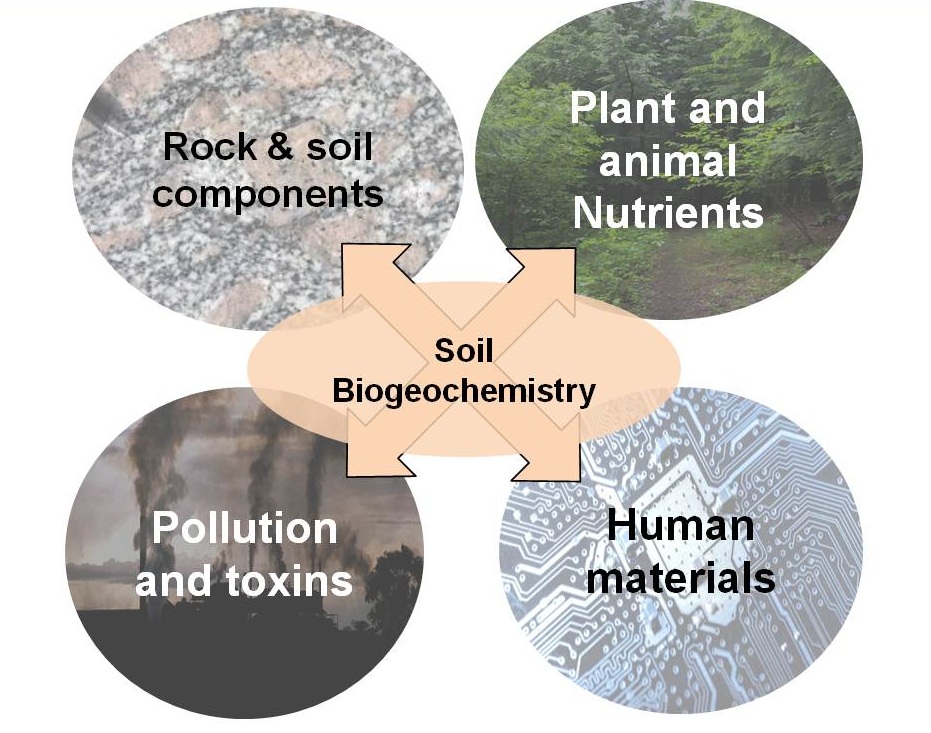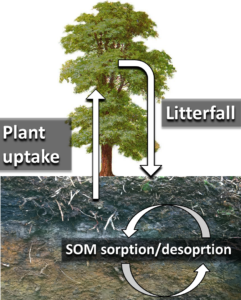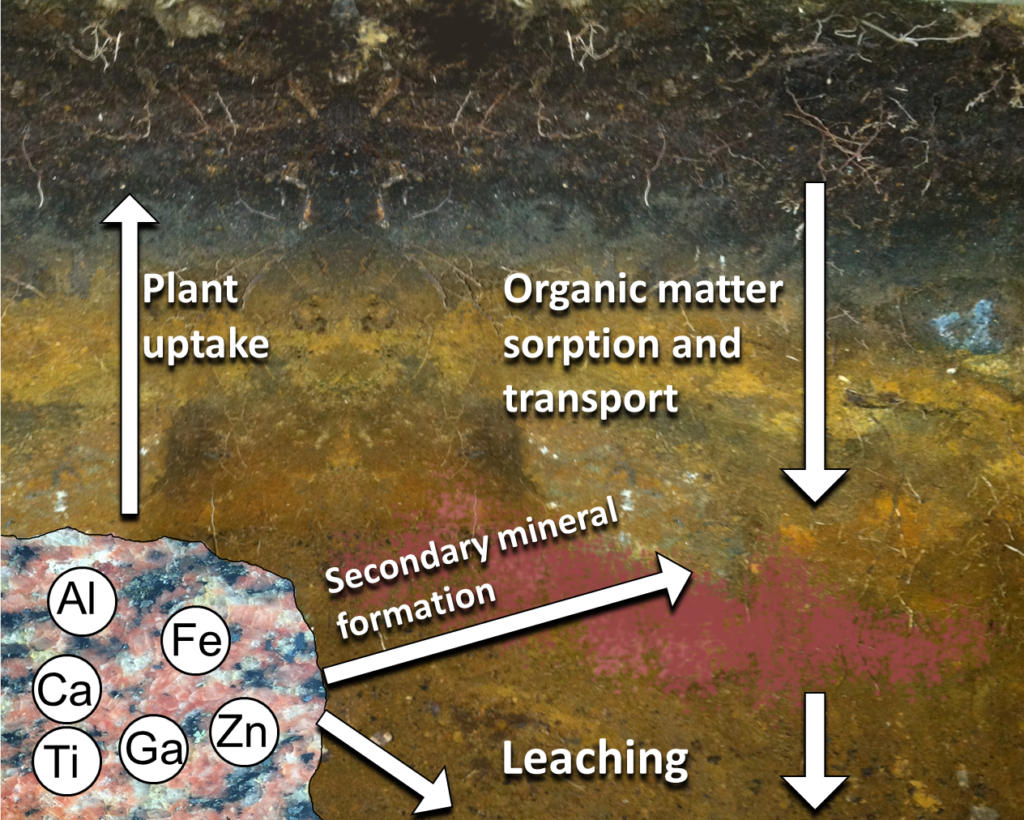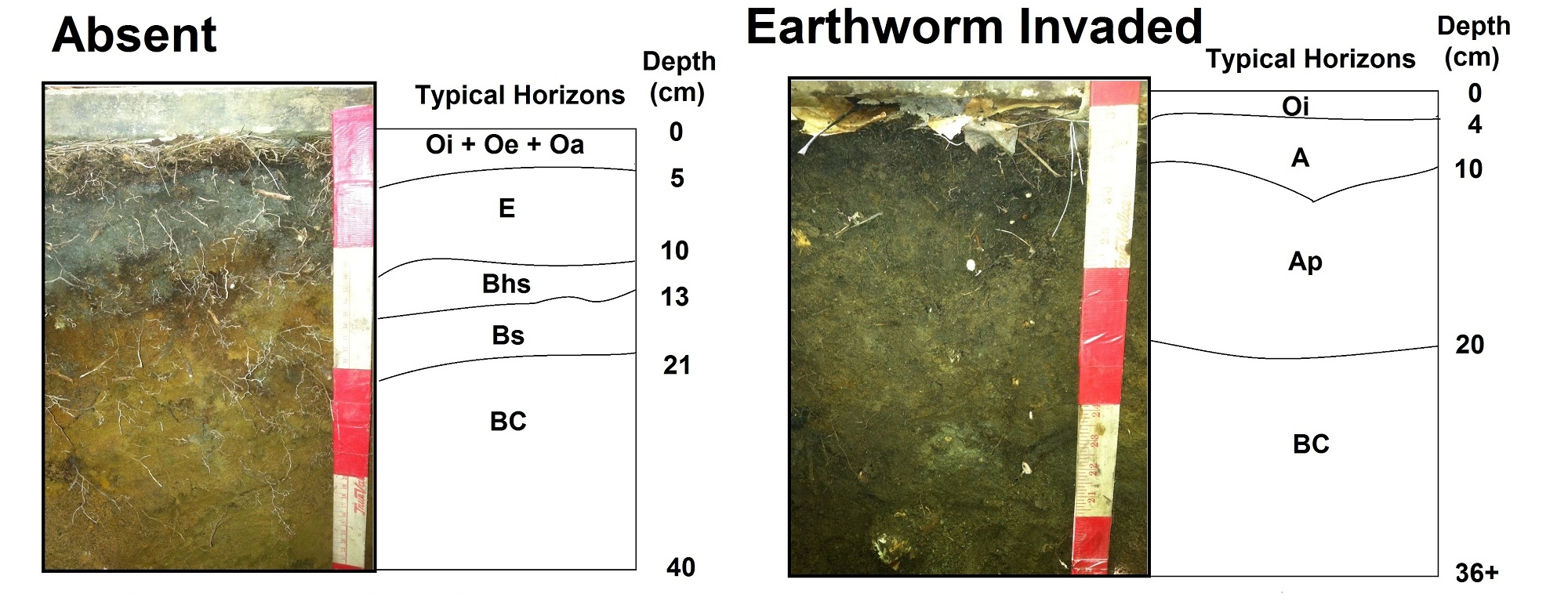Overarching Research Questions:
(1) What can metals and metalloids tell us about natural and human-impacted processes occurring in the Critical Zone?
(2) How do essential and toxic metals in soils impact plants, animals, and humans?
Why pursue these questions:
Pollution
- Globally, up to 10 million people die annually from pollution related diseases.
- Uptake of toxic metals by humans and animals can cause neurological, cardiovascular, and endocrine disorders.
- Soils in the Critical Zone sequester pollution from reaching our crops, drinking water, and atmosphere.
Nutritional security and ecosystem sustainability
- Metals are essential for humans, plants, and animals and deficiencies can cause permanent damage to our development and functioning.
- 2 billion people suffer from ‘hidden hunger’ from insufficient micronutrients.
- The growth of forests (which provide wood products) and crops (for human consumption) can be reduced from insufficient micronutrients as well.
Energy Sustainability
- Trace metals and rare earth elements are important for clean energy, batteries, and smart materials.
- Understanding what soil processes accumulate these metals could lead to identifying new, domestic sources of these metals
Research Area 1:
Tree-soil metal biogeochemistry in human-dominated and natural systems of the northeastern United States
- Plants exert a strong influence on terrestrial geochemistry.
First, plants need an assortment of metals and metalloids for chemical signaling, enzyme cofactors, and many other roles associated with their biochemistry. To meet this need plants, absorb plant-essential metals and non-essential metals from soils (and atmospheric deposition to an extent). This occurs in natural forests under silviculture/forestry practices as well as urban forests. - The uptake of specific metals by plants causes preferential retention of metals in soils. Plants can act as interceptors of atmospheric pollution due to their high surface areas on foliage and woody tissues.
- Lastly, plants drive the formation of organic matter in soils, which increase adsorption of metals. Metals of importance include: marconutrients such as Calcium, potassium, magnesium and micronutrients such as Manganese, Iron, Copper, Zinc, Molybdenum,
- Geochemical tools to quantify cycling of metals in the plant-soil system. This includes: sequential extractions of soils to determine mobility of metals, application of metal ratios (.e.g Mn/Ca), stable isotopes (e.g. Ca, Mg), and pseudoisotopes (Ca/Sr) to investigate genesis. Moreover, we can study rocks and minerals supplying elements to plants and soils such as X-Ray Fluorescence and Micro-XRF, Electron Microprobe Analyses, and Scanning Electron Microscopy (SEM-EDS) for examining physical distribution.
- Plants exert a strong influence on terrestrial geochemistry.
Research Area 2: Geologic and anthropogenic metals in the Critical Zone at the Watershed and Landscape Scale
- The release and retention of metals during weathering of primary minerals and secondary minerals is central to a number of concepts. First, we can learn about geologic release of pollutant metals or nutrients. Second, we can quantify soil development and investigate the processes that influence their development.
- Humans rely on products derived from weathering, in particular geologic resources (bauxite, laterites, etc). Determining the processes that govern metals and rare earth elements in soils is key for identifying economically-valuable deposits. Because many metals and rare earth elements are key for clean energy technology (e.g. solar panels and batteries) and digital components (chips and smart materials in laptops, tablets, and cell phones), determining the natural processes that control their accumulation during weathering is of importance for national security.
- Locations of interest:
- Connecticut River Watershed
- Deerfield Watershed of Massachusetts and Vermont
- Thames Watershed of Connecticut and Massachusetts
- Green Mountains of Vermont
- White Mountains of New Hampshire
- Berkshire Mountains of Massachusetts
Research Area 3: Exotic and Invasive earthworm changes to soil biogeochemistry
- Exotic and invasive earthworm species are an expanding source of environmental change in the northeastern United States. Non-native European and more recently eastern Asian earthworms have been introduced widely in the region. Their impacts on carbon and nitrogen are affecting plant fecundity and growth and there may be unknown impacts to inorganic nutrients and toxic metals at the forest stand level up to the catchment level.
- My research has focused on their role in terrestrial bioaccumulation and their ability to act as toxic metal ‘vectors’ to predators. Moreover, I have conducted laboratory experiments to determine how earthworms affect soil properties such as soil morphology and metal chemistry.
- Metals of interest include: Mercury, Lead, Cadmium, Selenium, Copper, Zinc



